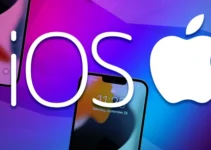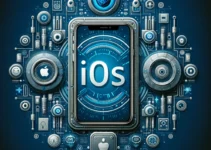Exploring the Untapped Potential of iOS Accessibility Features. iOS devices are renowned for their sleek design and powerful functionality, but beyond these surface-level attributes lie a suite of deeply integrated accessibility features designed to enhance usability for all. This article explores the hidden gems of iOS accessibility, highlighting how these tools can benefit a wide array of users, not just those with disabilities.
Enhancing Your Work Efficiency with iOS’s Essential Built-in Apps
Apple has long been a leader in incorporating accessibility into its technology, and with each iOS update, the accessibility features become more robust and nuanced. The first of these features we’ll discuss is VoiceOver, a screen reader built into iOS that speaks the items on the screen. This feature is incredibly useful for visually impaired users, allowing them to interact with their devices using gestures and taps while receiving auditory feedback.
Another significant aspect of iOS accessibility is Magnifier. This tool transforms the iOS device into a digital magnifying glass, using the camera to enlarge anything it’s pointed at. It’s useful not just for those with vision impairment but for anyone needing a closer look at small text or details, whether it’s reading a menu in a dimly lit restaurant or examining a tiny serial number on a piece of hardware.
Switch Control is another powerful feature, designed for users with very limited mobility. It allows them to navigate their iOS devices using switches and other adaptive devices for input instead of the touchscreen. This functionality can be life-changing, providing a level of independence to users with physical limitations.
iOS also includes features tailored to those with hearing impairments. For example, the Made for iPhone (MFi) hearing aids are designed to connect directly to iOS devices. This seamless integration provides a clear and private audio experience without the need for additional devices or accessories. Additionally, Live Listen can turn an iPhone into a remote microphone, sending sound directly to Made for iPhone hearing aids, which can be particularly useful in noisy environments.
Color adjustments and filters within iOS can help users with color blindness or other visual impairments by altering display colors to make them more distinguishable. Users can customize their display with color filters to better suit their visual preferences and needs.
The Reduce Motion feature is designed to help those who experience discomfort from the motion effects in the user interface. By reducing the movement of icons and screens, this feature helps minimize motion sickness and makes the device easier to use for those sensitive to motion.
Guided Access is another lesser-known but incredibly useful feature. It allows a user to lock an iOS device to a single app, and control which features are available. This can be helpful for managing device use among children or during presentations, as well as assisting users with cognitive limitations by reducing on-screen distractions.
iOS’s accessibility keyboard is a full-featured on-screen keyboard designed to assist users who have difficulty with physical keyboards. It supports customizable key and layout options, and can be used in conjunction with features like Sticky Keys or Slow Keys to accommodate a variety of physical needs.
Speech-to-text is an extremely practical tool for users with mobility or vision impairments. By dictating text directly into the device, users can compose messages, notes, and even longer documents without needing to type.
Siri’s expanded capabilities in recent iOS versions also play a crucial role in accessibility. Siri can understand a wide variety of commands and perform tasks without the user needing to navigate through menus or type instructions, which is incredibly beneficial for users with various disabilities.
Sound Recognition is a feature that listens for specific sounds—like smoke alarms, doorbells, or babies crying—and notifies the user when these sounds occur. This can be crucial for users with hearing impairments.
Back Tap is a feature that turns the entire back of the iPhone into a touch-sensitive button, which can be programmed to perform a variety of actions, such as opening the Control Center or activating Siri. This is especially useful for users who find it difficult to use traditional buttons and gestures.
The accessibility shortcut, often overlooked, allows users to triple-click the Home or Side button to quickly access their most frequently used accessibility features. This provides an easy and fast way to switch between features for users who rely on multiple accessibility tools throughout their daily device use.
Dark Mode, while popular among many for its aesthetic, also serves an important accessibility function. By reducing glare and increasing contrast, Dark Mode helps users with light sensitivity and can make text easier to read.
Haptic feedback has been refined in iOS to provide physical responses to touches. This can help users with visual impairments confirm their actions through touch, offering a tactile component to their interactions with the device.
The aforementioned features barely scratch the surface of iOS’s accessibility capabilities. With each update, Apple continues to enhance these features, broadening the scope of who can benefit from them and how. By delving deeper into these settings, users can discover a wealth of options designed to tailor their devices to their specific needs.
In conclusion, iOS’s accessibility features are not just tools for those with disabilities; they are enhancements that can improve the usability of the device for everyone. By exploring and understanding these features, users can take full advantage of what iOS offers.



